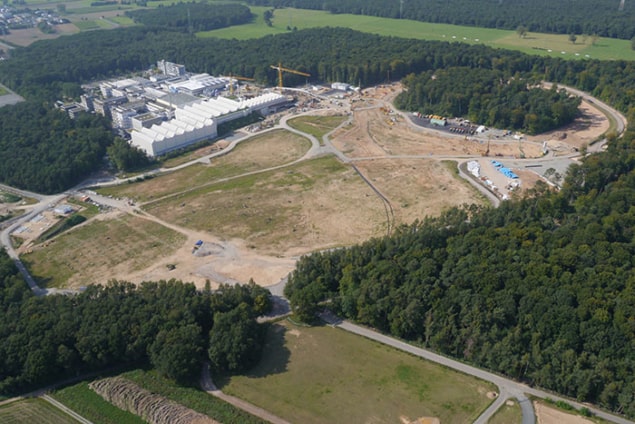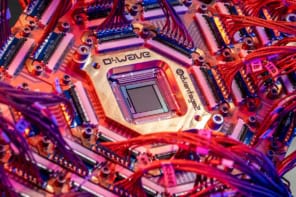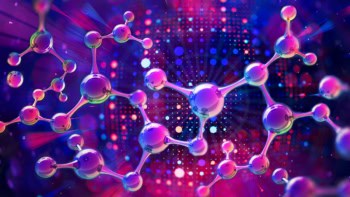
A committee of European nuclear physicists have called for a major facility currently under construction in Germany to be “urgently” completed without further delays. In its fifth five-year plan, released yesterday, the Nuclear Physics European Collaboration Committee (NuPECC) says that the €1.6bn Facility for Anti-Proton and Ion Research (FAIR), at the GSI heavy-ion lab in Darmstadt, will “reinforce” European leadership in nuclear physics once online in 2025.
FAIR will consist of two synchrotrons with a circumference of 1100 m built on top of one another in an underground tunnel. Ions from the GSI’s existing 200 m circumference synchrotron will be fed into the new double-ring facility, which will multiply the intensity of the ion beams by a factor of 100, and provide up to 1011 ions per second.
It will provide scientists with a selection of very intense and energetic particle beams. There will be a total of 15 experiments at FAIR in the four “experiment complexes”. Nuclear physicists will, for example, use the accelerated ions to generate beams of novel, unstable nuclei by firing them at a target made of a light element such as beryllium, as well as colliding heavy ions at high energies to generate a quark–gluon plasma. Atomic physicists, meanwhile, will use the facility to explore the properties of antihydrogen, which consists of an antiproton and a positron.
Protecting amphibians
FAIR is funded 75% by Germany and 25% by nine other collaborating countries, including Russia and India, as well as other European states such as France and Finland. However, it has been beset by delays since its conception more than a decade ago. After being hit by planning issues, which included the need to protect amphibians from a nearby road, a ground-breaking ceremony for the facility was only held earlier this year.
“We want this to be built as soon as possible – it is a priority for the community,” Rolf-Dietmar Herzberg from the University of Liverpool, who sits on NuPECC’s committee, told Physics World. “When delivered within the timescale it will be a fantastic facility.”
The NuPECC report also calls for the “urgent” completion of the Spiral2 facility being built at the French Heavy Ion National Accelerator in Caen as well as the continued support of the heavy-ion programme at CERN’s Large Hadron Collider, and theory groups working in nuclear physics.
Biggest success
Yet Herzberg says that perhaps the “biggest success” of the report is to highlight the “wide applications” of nuclear physics from healthcare to security. “I think that it is important to highlight how much physics can contribute to all walks of life,” he says. “What this report shows is the reach and range of nuclear physics from applications to theoretical efforts, to fundamental research at world-leading facilities.”
NuPECC, which is a committee of the European Science Foundation, previously released long-range plans in nuclear physics in 1991, 1997, 2004 and 2010. NuPECC chair Angela Bracco, from Italy’s National Institute for Nuclear Physics, now hopes that the recommendations will be taken up by European funding agencies, “in particular those that go beyond the capabilities of an individual country”.



